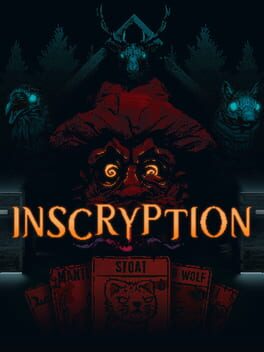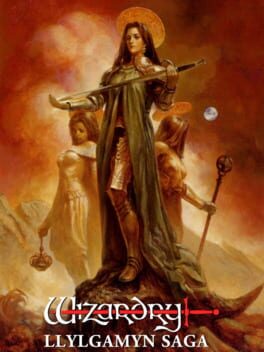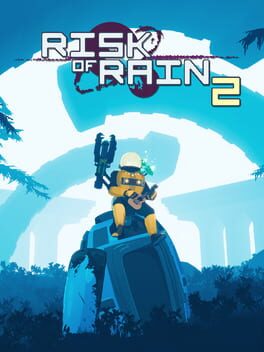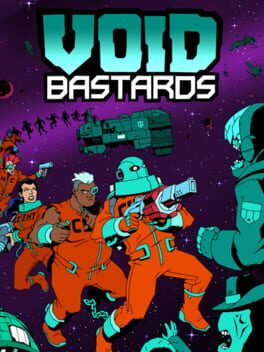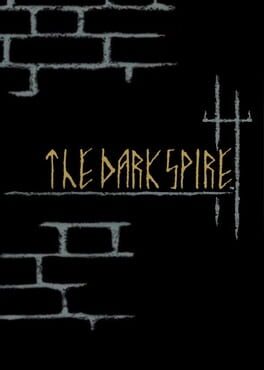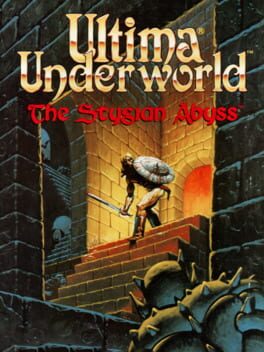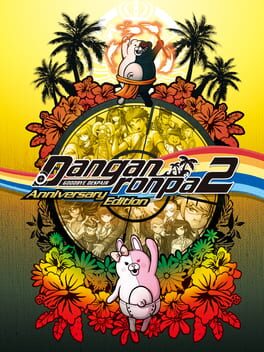caleb
140 Reviews liked by caleb
Inscryption
2021
Inscryption
2021
Persona 5 Royal
2019
The Persona franchise's singular mixture of an immaculate social-sim/dungeon-crawling gameplay loop and heinously regressive moral messaging continues apace with this absurd 110-hour slab of videogame. At that length, even if only 15% of the game is really truly vile that still adds up to a lot of time spent being miserable.
I'm not even convinced that the gameplay is the best it's been this time around, either - this is by far the most expansive and frictionless iteration on the combat system Atlus has rolled out yet, but I think that might be too much the case. Even on higher difficulties very little about the encounters ever feels surprising or dangerous, and that's disappointing to me. Likewise, the huge cast of characters strikes very few bum notes, but with a couple of exceptions also fails to hit the peaks of previous titles.
That's it in a nutshell: not the best Persona, not the worst; it gets close sometimes and there is so fucking much of it that it unconstestably walks away with the title of Most Persona, if nothing else.
I'm not even convinced that the gameplay is the best it's been this time around, either - this is by far the most expansive and frictionless iteration on the combat system Atlus has rolled out yet, but I think that might be too much the case. Even on higher difficulties very little about the encounters ever feels surprising or dangerous, and that's disappointing to me. Likewise, the huge cast of characters strikes very few bum notes, but with a couple of exceptions also fails to hit the peaks of previous titles.
That's it in a nutshell: not the best Persona, not the worst; it gets close sometimes and there is so fucking much of it that it unconstestably walks away with the title of Most Persona, if nothing else.
this is just a feature-listy review of this specific port of Wizardry 1-3 for PS1. you should know what you're getting into when you play these games.
it's a solid, good port of the classic Wizardry trilogy. the original game mechanics are kept, no Wiz V ninja/thief ambushes here unlike the SNES port (though updates from later revisions are implemented). the dungeon balance has been tweaked slightly and an automap is available to make play more comfortable. Jun Suemi's now iconic enemy redesigns are also used here, and Kentaro Haneda has provided a new CD soundtrack (as in, completely new from his NES music) to help enhance the game. the 3D graphics are tasteful and work well, but not especially interesting. unfortunately there were some poor choices made in translating the interface from keyboard to controller, resulting in constant accidental choices as you get used to navigating the menus.
if you want a relatively pure Wizardry 1-3 experience without playing the PC originals, this is the best way to go about it in my opinion. if you're alright with some additional gameplay changes, the SNES port is worth a look. the game has a settings menu that lets you use the original English text from the PC games with no cuts (slightly revised to accommodate for the fact it's a trilogy like in other revisions), and you can even use the original graphics if the Suemi art or 3D dungeons don't appeal to you.
it's a solid, good port of the classic Wizardry trilogy. the original game mechanics are kept, no Wiz V ninja/thief ambushes here unlike the SNES port (though updates from later revisions are implemented). the dungeon balance has been tweaked slightly and an automap is available to make play more comfortable. Jun Suemi's now iconic enemy redesigns are also used here, and Kentaro Haneda has provided a new CD soundtrack (as in, completely new from his NES music) to help enhance the game. the 3D graphics are tasteful and work well, but not especially interesting. unfortunately there were some poor choices made in translating the interface from keyboard to controller, resulting in constant accidental choices as you get used to navigating the menus.
if you want a relatively pure Wizardry 1-3 experience without playing the PC originals, this is the best way to go about it in my opinion. if you're alright with some additional gameplay changes, the SNES port is worth a look. the game has a settings menu that lets you use the original English text from the PC games with no cuts (slightly revised to accommodate for the fact it's a trilogy like in other revisions), and you can even use the original graphics if the Suemi art or 3D dungeons don't appeal to you.
Risk of Rain 2
2019
Void Bastards
2019
Void Bastards
2019
Immortality
2022
There’s a story I heard from an excerpt of Béla Balázs’ Theory of the Film. The story goes that a Moscovian’s cousin was visiting from Siberia. It was the early days of cinema, and she had never seen a film before. They had taken her to the cinema to watch a burlesque movie.
“The Siberian cousin came home pale and grim. ‘Well, how did you like the film?’ the cousins asked her. She could scarcely be induced to answer, so overwhelmed was she by the sights she had seen. ‘Oh, it was horrible, horrible!! I can’t understand why they allow such dreadful things to be shown here in Moscow!’
‘What what was so horrible then?’
‘Human beings were torn to pieces and the heads thrown one way and the bodies the other and the hands somewhere else again.’”
She had never seen a montage before. The hand, the head, the bosom, disjointed by time in the image, the Siberian girl had seen them as disembodied. The ability to mentally situate the montage and its subjects in time and space is not an innate skill. To understand a montage, you have to learn to reassemble a body.
We are privy to something similar in Immortality. We reassemble a body of work, that of Marissa Marcel. We must do it through an understanding of the movements of cinema. The central movement in the game is the match cut, and it’s story is unveiled through the process of navigating a complex web of them. A cup, a stool, a cross, a kiss, a rose, wings, water, windows. Move through them. In a sense, the player becomes the editor, but without real control over it. These images are broadened, too. A cup may also be a bathtub, smoke may also be static. A similar thing is done in Sam Barlow’s other recent games. The Her Story system does something a lot like this, but with language. Enter a word into the search bar, it shows you five videos with that word, no matter the context. In a sense, these games are about understanding relationship between context and sign. In Immortality, however, we navigate through the image. This is why the game is made of match cuts.
When a film makes a match cut, there is typically something meant. Something is always meant with a cut, but the match cut often has its own specific meaning. With this magic trick, we signify a relation between the object and it’s corollary. In Immortality, these cuts are dense and the correlation is often superficial. A cup may be a bathtub because they both hold water, but not because “cup” means the same thing as “bathtub”. It is direct, and that is felt. You can line up every single picture of a rose, every single picture of a microphone, every single crucifix. Unmoored from context, grafted into the network of images. Metaphor melts away; through the network of cuts emerges a symbolic différance, crude and indistinct denotation. Meaning is transfigured and debased. Rose is a rose is a rose is a rose.
A more defensive approach would view this as decay in the visual language of cinema, but it is a strength of Immortality. A character in the game briefly speaks of cubism, saying that he finds it a shame to reduce a beautiful woman's body to a bunch of squares. Immortality is sort of a cubism of the cinema, splaying out its forms. The absence of the typical cinematographic structure, both in editing and in image, challenges the immediate response we have to the image. I’m not so sure the game is fully up to embrace that project, but maybe that’s more appropriate, since I don’t know how many people will take up that challenge. The narrative and the image of these games are dismembered like the burlesque show. There is a story here about many things. There are lots of things I could have written about instead of this: masks, religion, the frequent primacy of sex in cinema, lost media fascinations, the archetype of the Wandering Jew, the purpose of storytelling. Other stuff, I’m sure. That in and of itself will be a challenge, and now, anchored to the network of match cuts, we are challenged in the same way. You cannot avoid being a structuralist. Both in image and in text, Immortality asks you to engage meaningfully and directly with the act of making meaning. The Siberian girl must learn how to watch a montage, and then she must learn how to make one.
“The Siberian cousin came home pale and grim. ‘Well, how did you like the film?’ the cousins asked her. She could scarcely be induced to answer, so overwhelmed was she by the sights she had seen. ‘Oh, it was horrible, horrible!! I can’t understand why they allow such dreadful things to be shown here in Moscow!’
‘What what was so horrible then?’
‘Human beings were torn to pieces and the heads thrown one way and the bodies the other and the hands somewhere else again.’”
She had never seen a montage before. The hand, the head, the bosom, disjointed by time in the image, the Siberian girl had seen them as disembodied. The ability to mentally situate the montage and its subjects in time and space is not an innate skill. To understand a montage, you have to learn to reassemble a body.
We are privy to something similar in Immortality. We reassemble a body of work, that of Marissa Marcel. We must do it through an understanding of the movements of cinema. The central movement in the game is the match cut, and it’s story is unveiled through the process of navigating a complex web of them. A cup, a stool, a cross, a kiss, a rose, wings, water, windows. Move through them. In a sense, the player becomes the editor, but without real control over it. These images are broadened, too. A cup may also be a bathtub, smoke may also be static. A similar thing is done in Sam Barlow’s other recent games. The Her Story system does something a lot like this, but with language. Enter a word into the search bar, it shows you five videos with that word, no matter the context. In a sense, these games are about understanding relationship between context and sign. In Immortality, however, we navigate through the image. This is why the game is made of match cuts.
When a film makes a match cut, there is typically something meant. Something is always meant with a cut, but the match cut often has its own specific meaning. With this magic trick, we signify a relation between the object and it’s corollary. In Immortality, these cuts are dense and the correlation is often superficial. A cup may be a bathtub because they both hold water, but not because “cup” means the same thing as “bathtub”. It is direct, and that is felt. You can line up every single picture of a rose, every single picture of a microphone, every single crucifix. Unmoored from context, grafted into the network of images. Metaphor melts away; through the network of cuts emerges a symbolic différance, crude and indistinct denotation. Meaning is transfigured and debased. Rose is a rose is a rose is a rose.
A more defensive approach would view this as decay in the visual language of cinema, but it is a strength of Immortality. A character in the game briefly speaks of cubism, saying that he finds it a shame to reduce a beautiful woman's body to a bunch of squares. Immortality is sort of a cubism of the cinema, splaying out its forms. The absence of the typical cinematographic structure, both in editing and in image, challenges the immediate response we have to the image. I’m not so sure the game is fully up to embrace that project, but maybe that’s more appropriate, since I don’t know how many people will take up that challenge. The narrative and the image of these games are dismembered like the burlesque show. There is a story here about many things. There are lots of things I could have written about instead of this: masks, religion, the frequent primacy of sex in cinema, lost media fascinations, the archetype of the Wandering Jew, the purpose of storytelling. Other stuff, I’m sure. That in and of itself will be a challenge, and now, anchored to the network of match cuts, we are challenged in the same way. You cannot avoid being a structuralist. Both in image and in text, Immortality asks you to engage meaningfully and directly with the act of making meaning. The Siberian girl must learn how to watch a montage, and then she must learn how to make one.
The Dark Spire
2009
The Dark Spire
2009
i really wish i'd played this one back in the day when i was enjoying such seminal classics as doom and x-com on my old 386. still, it's quite interesting coming to this game backwards, after king's field and shadow tower. playing it now is a bit like that feeling of going through a locked door to discover a place you'd previously explored, suddenly expanding the scope of the world, linking up pathways in your mind.
absolutely one of the peaks of 1992 alongside dragon quest 5 et al.
absolutely one of the peaks of 1992 alongside dragon quest 5 et al.
A flagrantly contrived and unlikeable adventure game that starts out bad and gets progressively worse. Somehow manages to be tediously predictable and obvious at every turn despite also being built entirely out of bullshit cheap tricks. Recommended for fans of Ace Attorney who wish it was dramatically worse and arbitrarily difficult to interact with.
The extra half a star is for voice actress par excellence Megumi Ogata putting her whole ass into the game's most colourful role and coming away almost single-handedly responsible for any semblance of life it possesses.
The extra half a star is for voice actress par excellence Megumi Ogata putting her whole ass into the game's most colourful role and coming away almost single-handedly responsible for any semblance of life it possesses.
